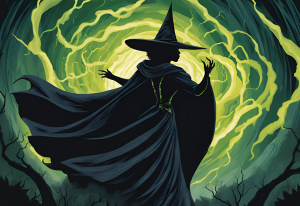
In the modern age where social issues and civil rights are ever prominent in our lives, one of the most popular means of sparking discussion is through the media. Film, an endlessly prevalent medium, reflects this as well. Since the dawn of cinema it has been a tool to discuss race, gender, sexuality, poverty and many other social issues. In the past couple of months alone, as feminism grows in our society, strong women have been prevalent in film. And more than just that cliché term “strong women,” the industry has been shifting to include more female directors and more female centric films, such as Obvious Child.
The history of women in film is a complex one. From the object of desire in the early days, to the femme fatale of the 30s and 40s, to the social change of the 60s and 70s, then back to being an object of desire in the 80s and 90s. One important test in defining whether or not the women in the film are one-dimensional became a part of pop culture in the mid-80s with the emergence of “The Bechdel Test,”—named after cartoonist Alison Bechdel who presented the test in her comic, Dykes to Watch Out For.
To pass the Bechdel test, the film must meet all three of the following requirements: 1. It must have two women in it, 2. They must talk to each other and 3. They must talk about something other than a man. If you want to see if any recent films have passed the test, check out BechdelTest.com for more.
But what if a female character is strong and is the only character in the movie? Think of the movie Gravity. Ryan is the only female character, yet she is the savior and an incredibly smart and strong female all by herself.
While the Bechdel test does prompt discussion, it should not be the end-all-be-all of tests to determine equality of the sexes. Even if the film does pass the test, sometimes situations such as the Trinity Syndrome can come into play. The Trinity Syndrome, as described by writer Tasha Robinson, comes from Trinity, the character in The Matrix, who started as a tough, strong character in the first film and became an object of desire in the following two films. Robinson states that films such as The Hobbit, The Lego Movie and How To Train Your Dragon 2 all have characters that start out as apparent strong females, but get lost in being bested by a man or becoming a part of a relationship/love triangle.
In a time where feminism is prevalent in the media, it is important to assess how effective film is as a medium to connect with the movement. Truly defining a strong female character and including more female writers, directors and producers will help the medium take more significant steps forward.









Be First to Comment